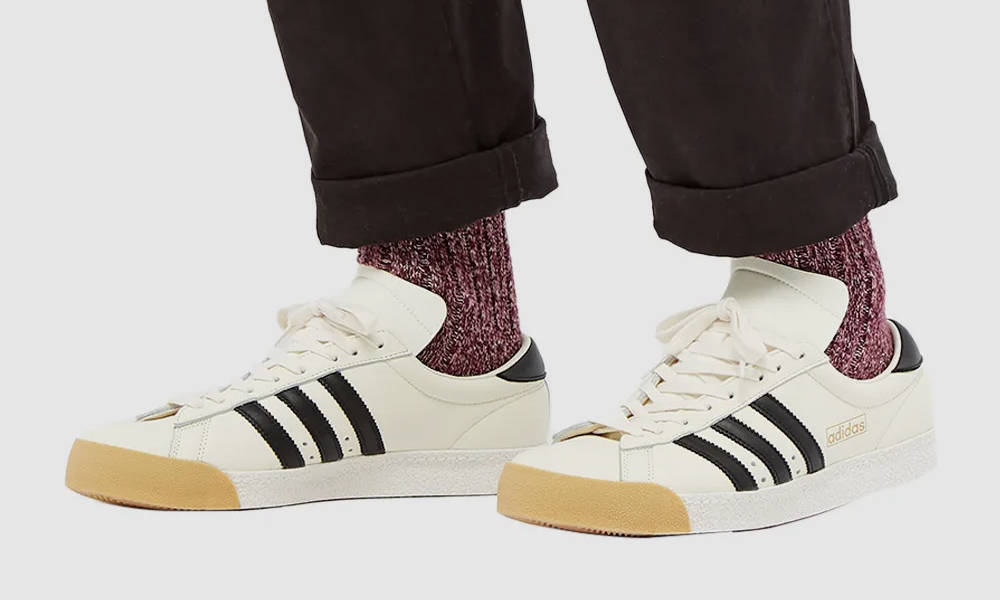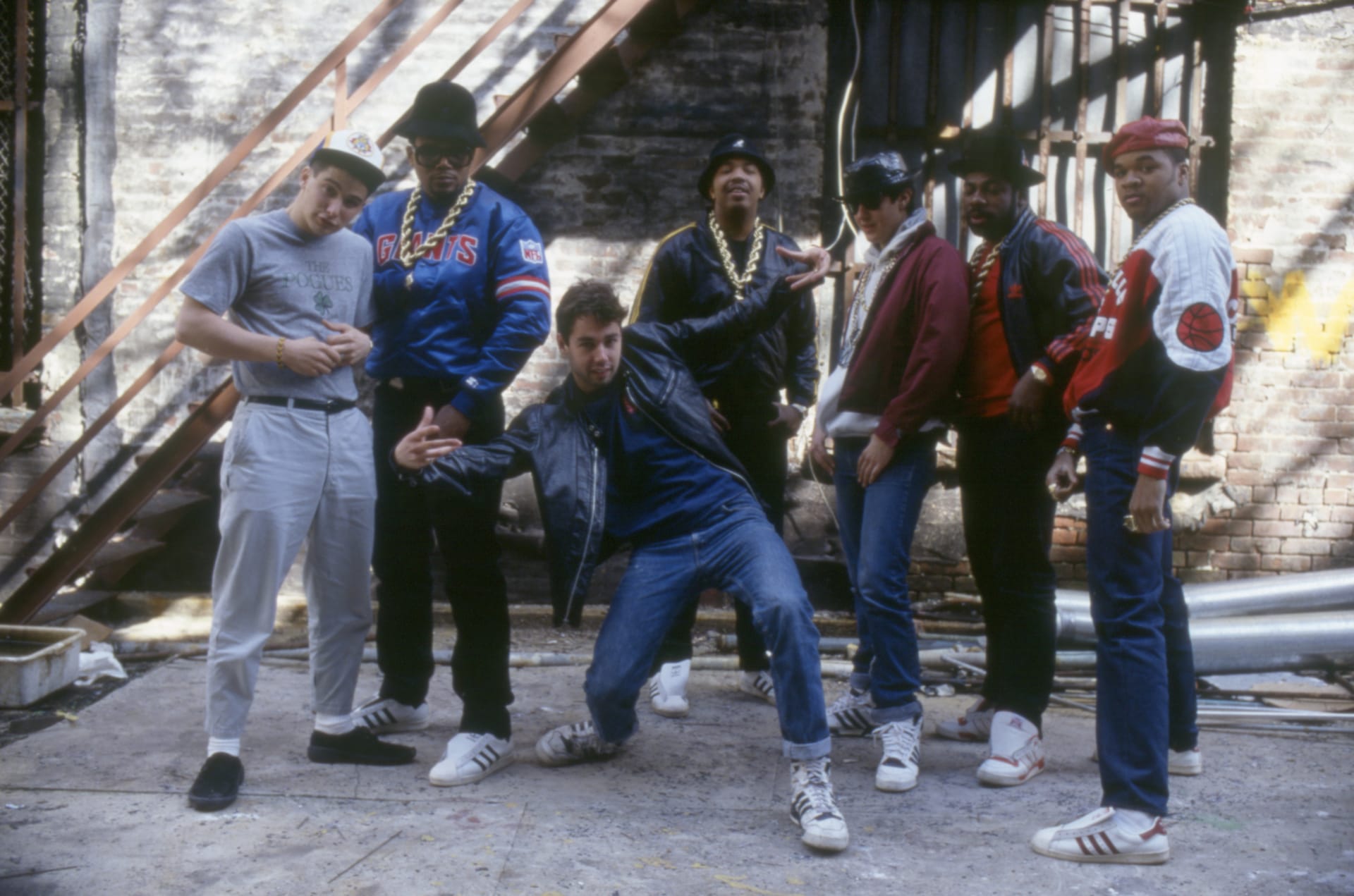When it comes to sneakers these days, people tend to use the word iconic a little too much. What does iconic even mean? The cultural icon can be a logo, a person, a building, or, yes, even a sneaker. It represents a concept or a movement with a great cultural significance to our society. Very few sneakers reach this kind of status. When it comes to the Adidas Superstar, I think we can all agree that this is a true cultural icon.
In 1960, Adidas main focus was track and field sporting equipment. During the Olympics of 1960, which took place in Rome, Adidas was the dominant brand among athletes. 75% of contestants were wearing the three stripes. Track and field legend, Wilma Rudolph, took the gold in Rome while wearing a pair of Adidas track shoes. The brand's dominance of the sporting world carried on all throughout the decade of the 1960s.
The 1968 Olympics in Mexico saw 85% of athletes wearing Adidas. In fact, athletes wearing Adidas products took home 37 gold medals, 35 silver medals, and 35 bronze. This was the lay of the land in 1964 when Adidas began developing basketball shoes. Horst Dassler, son of Adidas founder Adi Dassler, decided to focus his efforts on the American market. He was frustrated with his parent's development strategies for the business, and wanted to expand the brand at a larger scale.
Horst had huge ambitions for Adidas when he arrived in America. He consulted with Adidas U.S. market advisor Chris Severn, who told Horst that basketball shoes hadn't changed since the early 1900s, and that the industry was mostly dominated by canvas-based designs like Converse's All Stars and Pro-Keds' Royals. These types of shoes provided minimal support and caused a lot of players to injure their ankles and knees. Adidas worked closely with Severn to design a brand new concept for basketball shoes. A leather shell sole design, which provided an amazing herringbone sole to grip the court, improved stability and was 30% lighter than other shoes.
 |
| Adidas Supergrip |
The final addition, which would become the shoes defining feature, was the shell toe. The shell toe was designed to slow down wear and tear in the fore-foot area of the shoe. The shoe was released in 1964, and was named the Supergrip. Alongside the release of the Supergrip, was a high top version of the shoe, the Pro Model. At first, the shoes didn't sell very well at all, mostly due to skepticism because canvas shoes were the norm back then. Coaches and players could not wrap their heads around a leather basketball shoe, and who could blame them. They were used to wearing Chuck Taylor because that's all they knew.
It was the standard basketball shoe back then. It wasn't until San Diego Rockets' coach, Jack McMahon, decided to take a chance on the Supergrip that it would see any use. It took some convincing, but once he got his team to wear the Supergrip, they were ecstatic. By the end of the season, many teams had noticed the Rockets new shoes and they wanted in. When the Boston Celtics won the NBA championships in 1969 while wearing the Super Stars, the three stripes was launched to the fore front of basketball wear. About 85% of all pro players in the United States switched over to Adidas.
At some point between 1965 and 1969, the Adidas Supergrip got a full makeover, which included a name change to the Adidas Superstar and the distinct shell toe that we know today. The introduction of the Superstars simultaneously boosted overall business for Adidas, and left Converse in the dust. By the earl 1970s, basketball shoes accounted for 10% of overall Adidas sales. And as Adidas began to scale, Converse quickly found themselves struggling.
 |
| Kareem Abdul Jabbar |
By the end of the decade, the Converse All Star, which was the number one basketball shoe for years, would be phased out by Adidas. Within two years of the Superstars introduction, Adidas not only carved out its own space in the market, they began to destroy their competition. In 1976, Chris Severn convinced Horst Dassler that Adidas needed a superstar to go with the Superstar. Back then, the obvious choice was Kareem Abdul Jabbar, the biggest star in basketball of the era. Horst agreed to pay Jabbar a then record breaking 25 thousand dollars a year to endorse the shoe.
Over the next few years, Kareem Abdul Jabbar would become the face of Adidas basketball. Eventually the Adidas Superstar technology would be surpassed by other basketball shoe innovations, but the Adidas Superstars usefulness and popularity would not die. Thanks to the budding world of hiphop, the Superstar would find its true calling and achieve new levels of popularity as a lifestyle sneaker.
In the early 1980s, hip hop was developing at a rapid pace. Afrika Bambaataa released his first single, and Kurtis Blow, the first rapper to appear on national television, released the brakes. The record went on the sell more than a million copies and hip hop gradually evolved into big business. Legendary photographer, Jamal Shabazz, capture the New York scene perfectly during this era. His photographs show us the world where street wear fashion was dominated by a Kangol hat and boom box. His work captures the essence of hip hop, and I highly suggest you check out his photos if you wanna learn more about early hip hop fashion.
 |
| Run DMC |
Fast forward to 1985, and Run DMC is the biggest hip hop act in the world. The group has sold out arenas, and quickly becomes the first rap group to have certified gold and platinum albums. They were the first rap group to have its video played on MTV, appear on the cover of Rolling Stone, and the only rap group to preform at Live Aid in 1985. You see, before Run DMC, there was Grand Master Flash and the Furious Five, and they rocked leather jackets, almost like a glam rock band would.
Run DMC became the first hip hop group to dress like people from the block. From head to toe, Run DMC sported three stripes. From Adidas track suits to shell toe Superstars, their rise to fame sparked a boom. And in no time, fans were emulating their favorite artists' style, and showing up to sold out Run DMC concerts rocking lace-less Adidas Superstars and track suits. In 1986, the trio had just dropped their groundbreaking third album, Raising Hell, and were preforming at Madison Square Garden. Lyor Cohen, their road manager at the time, had invited Angelo Anastasio, an Adidas executive to the show. Anastasio was struck by the sight of 10 thousand fans lifting their Adidas sneakers into the air.
The Adidas exec reportedly rushed back to the Adidas headquarters, and within days, Run DMC became the first hip hop group to receive a multi-million dollar endorsement deal with the sports wear company. The rest is history, and here's what Run DMC had to say about it. "I think the relationship with Adidas legitimized our culture, because before it happened, people said it's just a fad, rap is just a fad, it's negative, not good, nobody will ever like it. So our relationship with Adidas legitimized us." What had been set in motion in the 1980s, would soon resonate even harder in the 1990s.
The Beastie Boys wore throw back Adidas shoes on the cover of their 1992 Check Your Head album. And the Superstar II was released. The only difference between the Superstar I and the Superstar II was improved material and a thick padded tongue. As the 1990s entered the 2000s, skaters like Keith Hufnagel and Mark Gonzalez, skated in Superstar.
The Superstars signature shell toe was a no-brainer for skateboarding. It was nearly built for withstanding the constant scraping of the grip take. Skaters benefited from the extra longevity and protection the shell toe provided. The explosion of hip hop and skateboarding culture coincided perfectly with the beginning of modern day street wear culture.
In 2003, Nigo, the founder of A Bathing Ape, invented himself into the Adidas Superstar legacy by using the silouette as a canvas. The release of the camo printed and yellow soled Super Ape Star caused big hype and to this day is a sought after shoe.
Over the last 40 years, the Adidas Superstar has been released in nearly every color way imaginable. And there has been countless collaborations with artists and designers, way too many to start name dropping. Despite massive retro releases from Jordan every year, innovative new products from Nike and boost-equipped sneakers from Adidas, the Superstar continues to outsell them all, 40 years from its original release.
A true icon, this shoe is timeless, and I'm convinced that it'll remain relevant for another 50 years.


